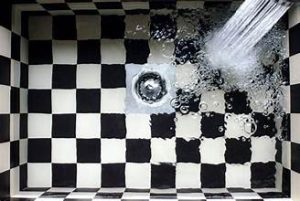Heavy rainfall can be a welcome break from the heat, but it’s not so pleasant when your drains start backing up. For many homeowners, stormy weather often brings with it the unpleasant surprise of slow drains, standing water, or even sewage backups. Understanding why this happens is the first step toward protecting your home—and your peace of mind.
The Connection Between Rain and Drain Backups
Your home’s plumbing and the surrounding stormwater systems are often more connected than you might think. During heavy rain, the local sewer systems can become overwhelmed by the sudden influx of water. When this happens, water may flow back through your private sewer line, especially if there’s already a blockage or damage within your pipes.
Even if your home is in good condition, older municipal systems can contribute to the problem. Many cities, including areas like Sandy Springs, have aging infrastructure that wasn’t built to handle today’s volume of stormwater runoff. The result? Backups in residential plumbing systems during and after storms.
Common Causes of Rain-Related Drain Backups
Clogged or Damaged Sewer Lines
Roots, grease, debris, or old corroded pipes can restrict flow in your sewer line. When combined with increased pressure from stormwater, this restriction can lead to backups inside your home.
Poor Grading and Drainage
If the ground around your home slopes toward your foundation, rainwater can pool and seep into your basement or overwhelm your sump pump system. This water may eventually make its way into your drains.
Inadequate Plumbing Ventilation
Plumbing vents allow air to enter the pipes and help water flow properly. During heavy rain, blocked vents can reduce drainage efficiency, increasing the risk of backup.
Combined Sewer Systems
Some neighborhoods still rely on combined sewer systems that handle both sewage and stormwater. In a heavy rainstorm, these systems can flood and push contaminated water back into your home.
How to Prevent Drain Backups When It Rains
The best defense is a combination of regular maintenance and strategic upgrades. If your pipes are vulnerable, a licensed service professional can recommend trenchless repairs or pipe replacement. Installing a backwater valve is another smart investment—it prevents wastewater from re-entering your home during a sewer surge.
Homeowners should also make sure gutters and downspouts are directing water at least ten feet away from the foundation. And don’t forget about sump pump maintenance. A failed sump pump during a rainstorm can quickly lead to basement flooding.
If you’re experiencing frequent issues, it may be time to consider upgrading your residential plumbing in Sandy Springs to ensure your system can handle both everyday use and unexpected weather events.
Contact HM Plumbing today for your residential plumbing needs. Serving with Integrity.

